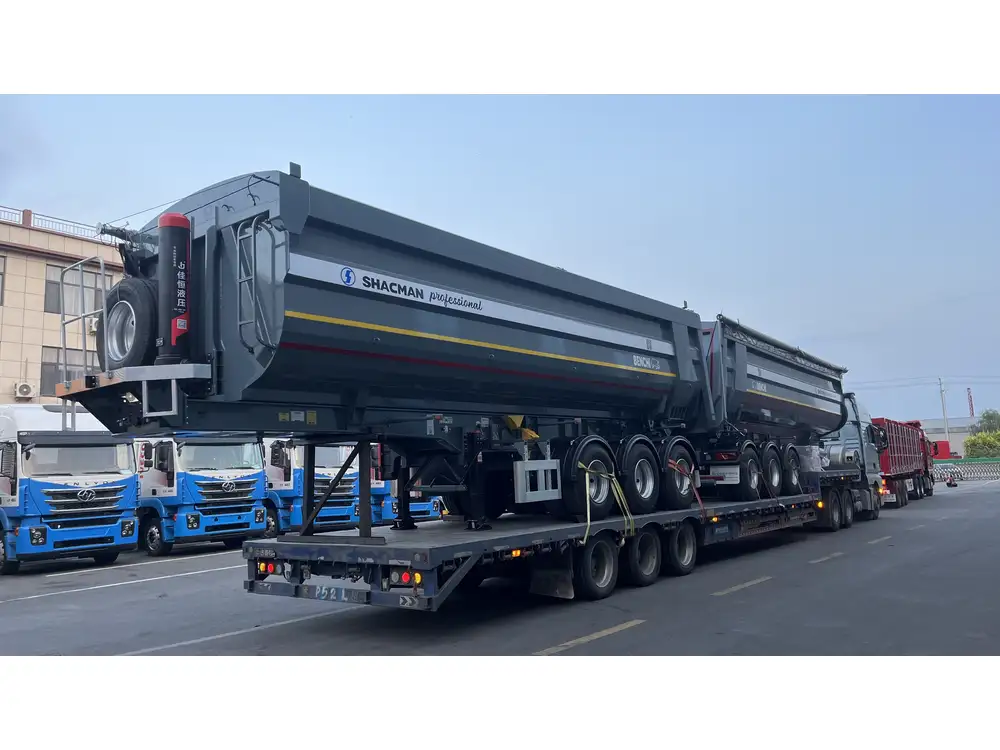Flatbed trailers serve an important role in the transportation industry, providing a versatile platform for moving various cargo types. Anyone considering purchasing a flatbed trailer, particularly a 20-foot model, may naturally inquire about its weight. In this detailed article, we will explore the nuances of flatbed trailers, specifically focusing on the weight of a 20-foot flatbed trailer, factors influencing its weight, and essential considerations when using or purchasing one.
Table of Contents
- Introduction to Flatbed Trailers
- Weight Specifications of a 20-Foot Flatbed Trailer
- 2.1. Average Weight
- 2.2. Variances in Weight
- Factors Affecting Flatbed Trailer Weight
- 3.1. Material Composition
- 3.2. Construction Design
- 3.3. Accessories and Features
- Importance of Weight Understanding
- Regulatory Considerations for Trailers
- 5.1. Weight Limit Regulations
- 5.2. Licenses and Permits
- Comparative Analysis: 20-Foot Flatbed vs. Other Sizes
- Conclusion and Recommendations
1. Introduction to Flatbed Trailers
Flatbed trailers are an essential tool in the logistics and transportation sectors. They offer increased load flexibility compared to enclosed trailers, making them suitable for transporting large, bulky items that require quick loading and unloading. With sizes ranging from 12 feet to over 40 feet, 20-foot flatbed trailers have become popular for many applications, such as construction, agriculture, and delivery services.

2. Weight Specifications of a 20-Foot Flatbed Trailer
2.1. Average Weight
On average, a 20-foot flatbed trailer weighs between 2,500 and 3,600 pounds (approximately 1,134 to 1,632 kg). This range depends on various factors, including the materials used for construction and the overall design of the trailer.
2.2. Variances in Weight
Weight can vary significantly among different manufacturers and models. For instance, a lightweight aluminum flatbed may weigh around 2,500 pounds, while a heavier steel model could tip the scales close to 3,600 pounds.
| Type of Flatbed | Average Weight (lbs) | Material |
|---|---|---|
| Aluminum Flatbed | 2,500 | Aluminum |
| Steel Flatbed | 3,600 | Steel |
| Wood Deck Trailer | 3,100 | Mixed materials |

3. Factors Affecting Flatbed Trailer Weight
Understanding what impacts trailer weight is crucial for buyers and users. Below are some significant factors that influence the weight of a 20-foot flatbed trailer:
3.1. Material Composition
The choice of material plays a crucial role in weight characteristics.
- Aluminum: Lightweight, often used for its rust-resistance properties, making it ideal for long-term use.
- Steel: Heavier but extremely durable, offering more strength for transporting heavy loads.
3.2. Construction Design
Different designs can lead to varying weight outcomes. Notably:
- I-Beam vs. C-Channel Frame: I-beam trailers usually offer sturdiness but can be heavier compared to those using C-channel construction.
- Decking Material: The weight of the decking material can significantly impact overall trailer weight. Wood, metal, or composite materials all have different densities and weights.

3.3. Accessories and Features
Additional features can increase a trailer’s weight. For example:
- Side Rails: Adding side rails or foldable sides can enhance functionality but also adds weight.
- Adjustable Couplers and Drop Legs: These add convenience and usability but do contribute to the overall weight.
4. Importance of Weight Understanding
Knowing the weight of a 20-foot flatbed trailer is not merely academic; it has practical implications. Some of the key reasons to understand this include:
- Towing Capacity: Your vehicle must possess adequate towing capacity to safely haul the trailer. Knowing its weight helps prevent overloading and potential failures.
- Load Distribution: Understanding weight aids in appropriate load distribution, which is critical for safety and stability on the road.
- Fuel Efficiency: Heavier trailers can reduce fuel efficiency, making it essential to understand your trailer’s weight for cost-effective operations.
5. Regulatory Considerations for Trailers

5.1. Weight Limit Regulations
Trailer weight is subject to various local and federal regulations. In the United States, for instance, the Federal Highway Administration imposes limits on the maximum weight that can be towed, generally set at 80,000 pounds for the entire vehicle and trailer combined. Knowing your flatbed trailer’s weight helps ensure compliance.
5.2. Licenses and Permits
Towing a heavy trailer may require special permits or licenses in certain states. For example, in some jurisdictions, a different class of driver’s license is needed for trailers exceeding a specific weight. Familiarity with local regulations helps in avoiding fines and ensuring safe operation.
6. Comparative Analysis: 20-Foot Flatbed vs. Other Sizes
To contextualize the weight of a 20-foot flatbed trailer, let’s compare it to other common trailer sizes.
| Trailer Size | Average Weight (lbs) | Common Use Cases |
|---|---|---|
| 16-Foot | 2,200 – 3,000 | Landscaping, small equipment shipping |
| 20-Foot | 2,500 – 3,600 | Construction materials, HVAC units |
| 24-Foot | 3,000 – 4,200 | Large machinery, multiple pallets |
| 30-Foot | 3,500 – 5,500 | Heavy, bulky freight, cargo for large jobs |

Insights from the Comparison
- Versatility: The 20-foot model is a balanced choice for both light and medium cargo.
- Weight Distribution: Longer trailers might complicate maneuverability but can offer more space.
- Operating Costs: Heavier models typically incur more fuel costs, necessitating careful selection based on cargo requirements.
7. Conclusion and Recommendations
When considering a 20-foot flatbed trailer, understanding its weight is essential for safe and efficient operation. From material composition to construction design, many factors influence trailer weight. Compliance with regulatory standards ensures you stay legally safe while maximizing your vehicle’s towing capacity.
Recommendations:
- Assess your specific transportation needs before purchasing a trailer.
- Consider ergonomic features that add value without significantly increasing weight.
- Regularly check local laws around trailer operation to avoid penalties.
A thorough understanding of a 20-foot flatbed trailer’s weight will not only facilitate informed purchasing decisions but also enhance operational safety and efficiency. For further inquiries or tailored advice regarding flatbed trailers, reach out to industry experts who can provide insights specific to your situation.



